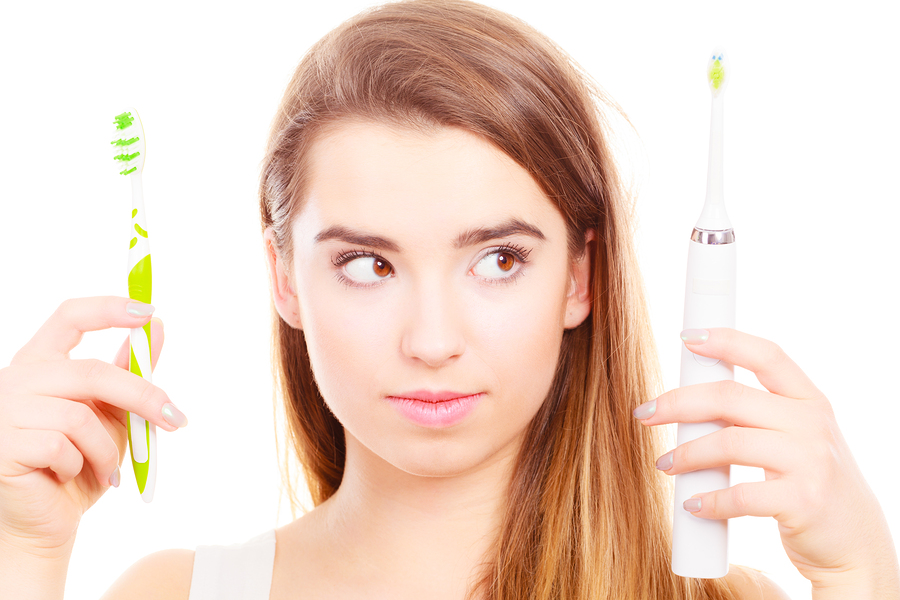Within the dental industry, there has been a great debate regarding the potential superiority of electric toothbrushes over traditional manual instruments. While there are strong opinions on both sides, there are some clear differences between the two types of brushes that might make one preferable for certain people. Here’s what you should know about the advantages and disadvantages of each option.
Electric Toothbrush vs Manual
When it comes to choosing a toothbrush, individual preferences tend to carry the day. If you like a toothbrush, you tend to brush longer. If you dislike it, you are less likely to spend an adequate amount of time and effort cleaning your teeth. To determine which type of brush might appeal best to you, consider this helpful comparison:
Manual Toothbrushes
Pros
- Inexpensive
- Available with a variety of styles, heads and bristles
- Easy to take on trips
- No batteries or charging requirements
- Easy to replace if damaged or lost
Cons
- They don’t have timers
- They are difficult to use for people with certain disabilities
- They require good brushing technique
Electric Toothbrushes
Pros
- Easier to use for people with braces
- Great for people with dexterity problems, such as children, the elderly or people with disabilities
- Offers a variety of head movements, including circular, rotation oscillation, counter oscillation and side-to-side
- Can increase enthusiasm about brushing
Cons
- Expensive
- Breakable
- Require charging
- Susceptible to damage
Are Electric Toothbrushes Better?
According to experts at the American Dental Association, when it comes to dental hygiene, it’s not about the brush, it’s about the brusher. In most cases, there’s no added benefit to using an electric toothbrush, that is unless a person has arthritis or some other type of issue that makes it difficult to hold or maneuver a traditional toothbrush.
On the other hand, according to Consumer Reports, after analyzing 56 studies that tested the performance of manual and electric toothbrushes, research organization Cochrane found that electric models provided a slight advantage. Still, while there may be some evidence to suggest that electric toothbrushes could outperform manual toothbrushes in certain instances, Consumer Reports ultimately agreed with the ADA that a person’s technique has the most to do with a brush’s performance.
With all that being said, some people prefer electric toothbrushes, and this preference may make them more likely to spend extra time thoroughly brushing their teeth. Whatever type of toothbrush you use, it’s important to brush for at least two minutes to promote optimal dental health. You should also schedule regular cleanings and exams with your local dentist.
How to Choose a Good Toothbrush
According to the ADA, both manual and powered toothbrushes can be effective at removing plaque, as long as the brusher uses good technique. That said, when choosing a toothbrush, it’s important to look for the ADA Seal, which means the product has been thoroughly tested for efficacy and safety by the ADA Council on Scientific Affairs, a renowned independent body of scientific experts.
To qualify for the ADA’s coveted seal of acceptance, a toothbrush must show all of the following:
- All components are safe to use within the mouth
- Bristles will not fall out of the instrument after normal use
- Bristles do not include jagged or sharp endpoints and edges
- The toothbrush can be safely used by children without adult supervision
- The toothbrush can reduce the risk of mild gum disease and plaque
Both manual and electric toothbrush products have received ADA Seals. For a complete list, visit the ADA’s website.



 Previous Article
Previous Article